Zatisfy delivers world-class service to manufacturers, importers, and exporters who want to sell their products in European Union countries.
Below, we have collected frequently asked questions relating to CE marking. If you do not find an answer to your question, just contact us and we will be happy to help you!
One of the most common points of confusion, from our perspective, is the so-called “Certificate of Conformity”, “Certificate of Compliance” or similarly named documents. These are documents that importers are regularly supplied with, and some manufacturers within the EU want to acquire. While these two certificates have definitions within certain EU-legislations, they often appear in other circumstances.
Such certificates are often brought up by economic operators, who think that their product must be submitted to an authority for certification and, in that manner, be allowed to use the CE mark. This is an understandable misconception, since this is how product compliance works in certain other markets.
Many of these certificates that we have seen are supplied to manufacturers by test labs. They are essentially summaries of full-length test reports for a specific legislation in these cases. Still, due to the lack of understanding by some actors in the supply chain, they are interpreted as a complete validation of product compliance.
The CE marking process is primarily based on technical documentation and self-declaration, not certification. Although there are certain certificates as stated above, also the most broadly defined certificate “EU type-examination certificate“. The “EU type-examination certificate“ is often an optional alternative to self-assessment, and in certain circumstances it is obligatory.
Now, there is certainly a need for certificates but in general, certificates should never be viewed as especially meaningful without the underlying knowledge to assess the actual content of the certificate.
Economic actors are sometimes surprised by the amount of technical documentation required for their products since there are already similar or identical products on the market. This is especially common for importers who intend to rebrand products under their own trademark. The original manufacturer sometimes assures the importers that other importers have already done the same for the product, and it must already be compliant.
This effectively displays that too much focus is placed on the “actual” compliance of the product, but disregards the entire technical documentation section of the CE marking process that is meant to prove said compliance.
An economic actor that sells products that have been rebranded under their trademark or “private label” takes up a large part of the responsibility for product compliance (we are inclined to say all responsibility), which is often misunderstood. The fact is that any actor that places their trademark (solely) on a product is considered the manufacturer for all intents and purposes. The actor then has all obligations of a manufacturer, which include having the correct technical documentation and signing the correct declarations.
In these cases, it does not matter if the product under its original trademark was in complete compliance if the private labeller does not have the documentation for their “new” product. This usually goes hand-in-hand with the previous misconception that two private labellers, let’s call them Actor A and Actor B, purchase the same product from a third-country manufacturer (i.e. outside of the EU/EEA market).
Perhaps Actor A takes all necessary steps for proving compliance, but Actor B has seen that Actor A has stated the compliance of their products, and relies on that for proof of their compliance. Actor B will not in fact be in compliance.
Or perhaps Actor A believes that they are not actually considered the manufacturer and therefore have no technical documentation, but the product is still CE marked. Actor B has seen that the product is on the market and assumes that the CE mark is correctly applied. Actor B then orders their product batch, assuming that its compliance can be proven. Still, drawing up the technical documentation, they find that the product is non-compliant in design and must be discarded.
It is therefore essential for private labellers to understand their legal obligation. And also, it is incredibly important that the technical documentation and compliance testing are done before ordering anything larger than a sample batch and that no assumptions of compliance are made..
It is the manufacturer’s sole responsibility to draw up the technical documentation and accompanying declarations (for specific legislations, an Authorised Representative can be mandated to draw up some of the documentation). But this does not mean that other actors are free of obligations. A due diligence system is defined in many legislation under the “Obligations of Economic Operators,” where commonly, importers and distributors hold the responsibility to verify that the manufacturer has performed certain tasks.
Importers must essentially verify that the manufacturer has completed every obligation to show compliance including verifying that the product has the technical documentation.
Distributors hold a lesser degree of responsibility; they must only verify that all information that reaches the customer is in place. This includes accompanying documents, labelling, and, when applicable, that the product is CE marked.
No actors except the consumer/end-user (except ancillary actors, e.g. transport) are therefore allowed to “trust” or “assume” that the product is compliant. Therefore, they must take the same steps to ensure that the product they import or distribute comply.
Vill veta mer?
Om du vill veta bättre hur Zatisfy kan hjälpa till med att följa EU:s marknadslagstiftning, läs gärna mer här, skicka ett mail till [email protected] eller boka ett kostnadsfritt 25 min möte med någon av våra experter här.
CE marking is required for various product groups, including electronics, toys, medical devices, personal protective equipment and machinery. It depends on whether the product falls within the scope of a CE marking directive.
The time it takes to CE mark a product varies depending on the product type and how far you have come. It can take from a few weeks to several months or years.
It depends on the product type and whether it is covered by CE marking directives within the EEA.
Yes, in fact it is the case that a manufacturer ALWAYS CE marks. Manufacturers CE mark themselves by following the necessary procedures and standards. Often it involves testing and documentation and only occasionally external certification is required.
CE stands for “Conformité Européenne” in French, which means “European Conformity”.
Products covered by specific EU directives and regulations require CE marking.
The product can not be sold on the market within the EEA, and the manufacturer may face legal consequences. This may result in the product being discontinued and recalled.
Within the EEA, a machine covered by the requirements may not be sold or used on the market if it is not CE marked.
The cost varies depending on the product type and scope and varies from SEK 0 to 1 million or even more. It often includes testing, documentation and possible certification. Read more in our article about costs here.
Not all clothing has to be CE marked. It depends on whether they are covered by relevant directives, such as personal protective equipment.
Yes, if the machine is covered by relevant directives within the EU.
A written declaration from the manufacturer that declares that the product complies with applicable laws and regulations.
When the user needs information to use the product safely and effectively, then a product covered by the GPSD (General Product Safety Directive) needs a manual.
Instructions or manuals must always be translated into the language(s) applicable in the country determined by the Member State where the product is sold.
A recall refers to a process where a manufacturer, importer or distributor withdraws a product from the market. This is usually done when it has been discovered that the product poses a risk to consumers or does not meet safety standards or regulatory requirements. There are both voluntary (where the manufacturer himself decides to recall) and forced (where a market control authority makes the decision) recalls.
The manufacturer, importer or distributor pays all costs for a recall.













©2024 ZATISFY. All rights reserved.